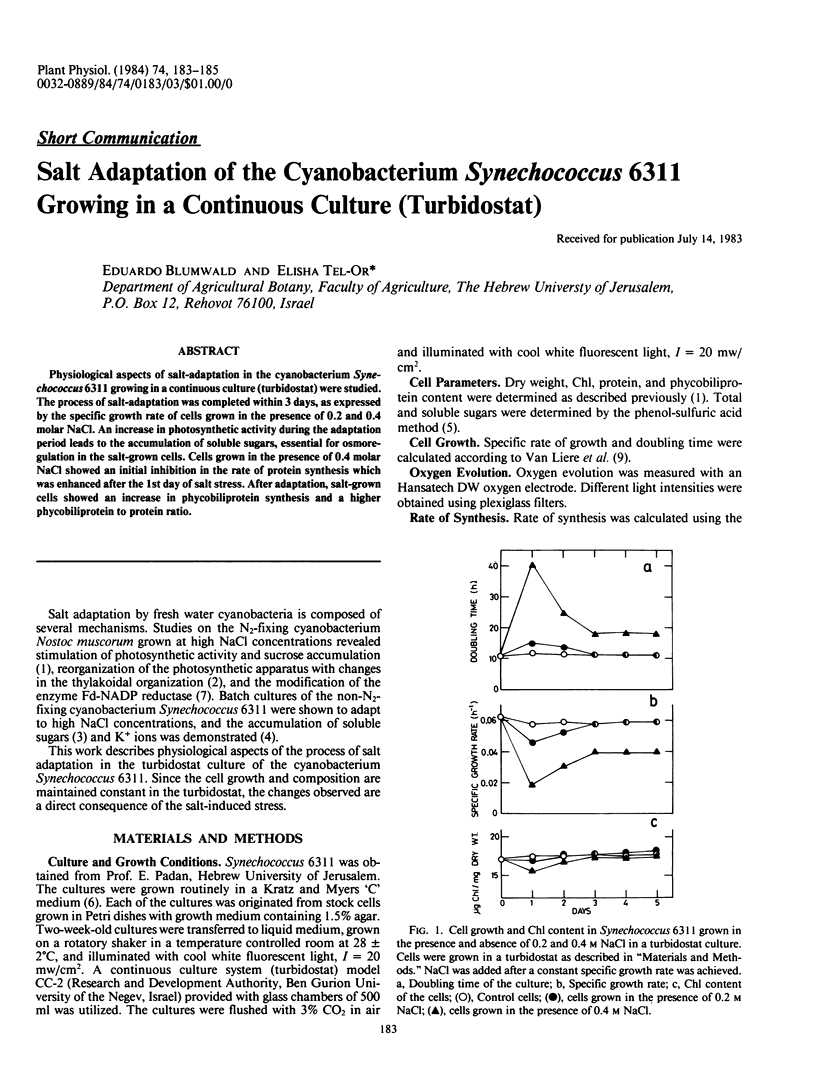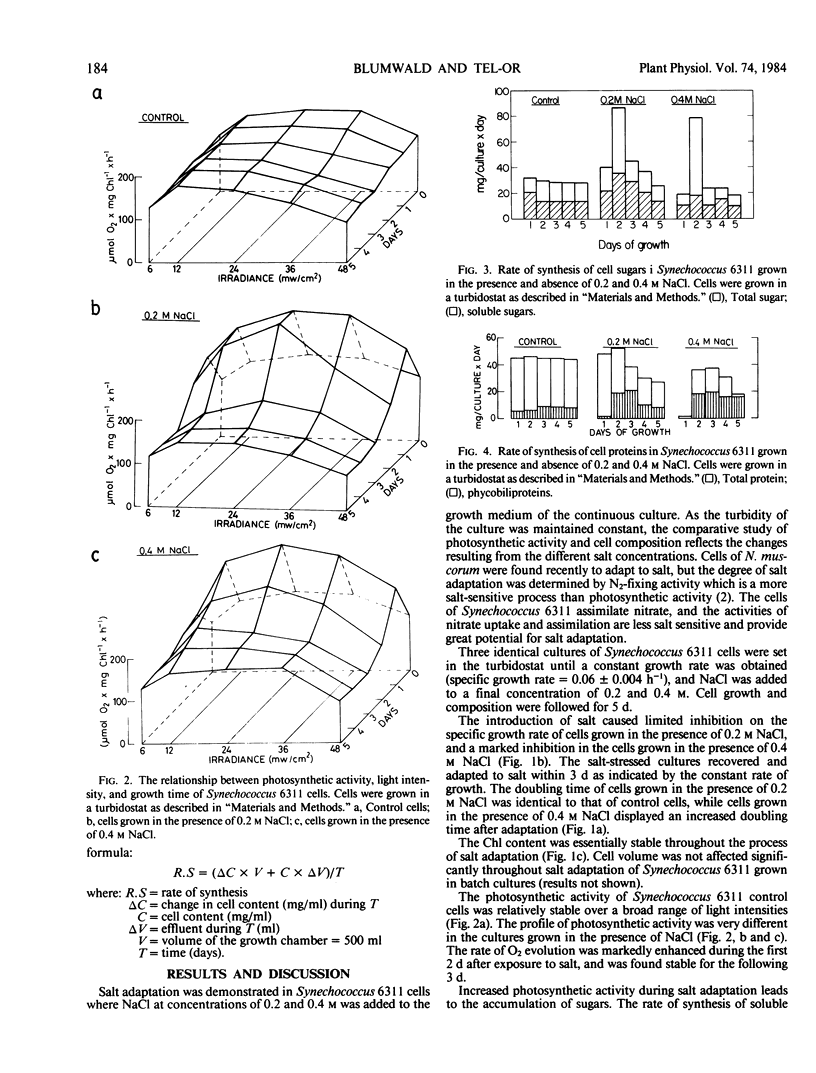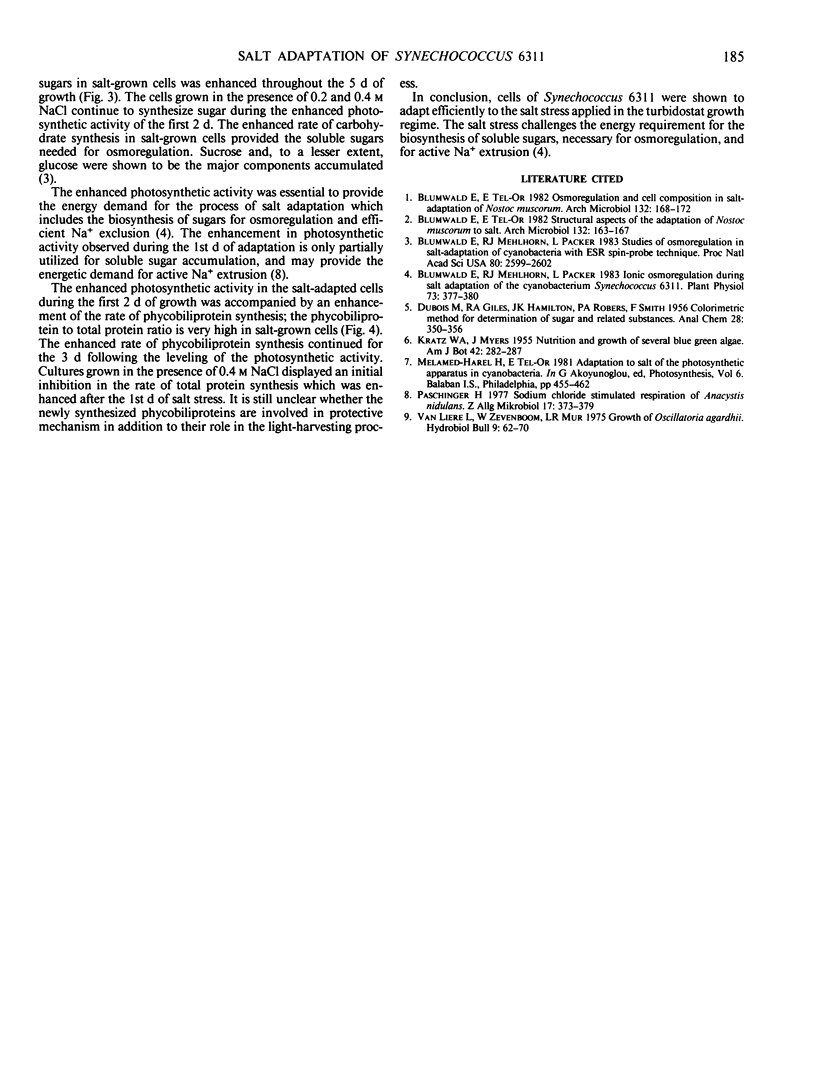Abstract
Physiological aspects of salt-adaptation in the cyanobacterium Synechococcus 6311 growing in a continuous culture (turbidostat) were studied. The process of salt-adaptation was completed within 3 days, as expressed by the specific growth rate of cells grown in the presence of 0.2 and 0.4 molar NaCl. An increase in photosynthetic activity during the adaptation period leads to the accumulation of soluble sugars, essential for osmoregulation in the salt-grown cells. Cells grown in the presence of 0.4 molar NaCl showed an initial inhibition in the rate of protein synthesis which was enhanced after the 1st day of salt stress. After adaptation, salt-grown cells showed an increase in phycobiliprotein synthesis and a higher phycobiliprotein to protein ratio.
Full text
PDF


Selected References
These references are in PubMed. This may not be the complete list of references from this article.
- Blumwald E., Mehlhorn R. J., Packer L. Ionic Osmoregulation during Salt Adaptation of the Cyanobacterium Synechococcus 6311. Plant Physiol. 1983 Oct;73(2):377–380. doi: 10.1104/pp.73.2.377. [DOI] [PMC free article] [PubMed] [Google Scholar]
- Blumwald E., Mehlhorn R. J., Packer L. Studies of osmoregulation in salt adaptation of cyanobacteria with ESR spin-probe techniques. Proc Natl Acad Sci U S A. 1983 May;80(9):2599–2602. doi: 10.1073/pnas.80.9.2599. [DOI] [PMC free article] [PubMed] [Google Scholar]
- Paschinger H. Sodium chloride stimulated respiration of Anacystis nidulans. Z Allg Mikrobiol. 1977;17(5):373–379. doi: 10.1002/jobm.3630170507. [DOI] [PubMed] [Google Scholar]


